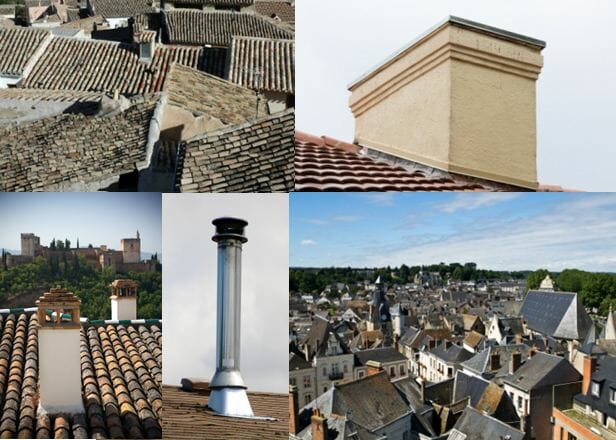Repairing Lead Flashing on a Roof.
Lead Flashing refers to thin continuous pieces of lead sheet installed to prevent the passage of water into a structure from an angle or joint. While Lead roof flashing is often made from metals or other materials other than lead, lead flashing lasts up to 500 years.
The most common locations for roof flashing are at valleys, chimneys, roof penetrations, eaves, rakes, skylights, ridges, and at roof-to-wall intersections.
Lead flashing usually comes in the form of lead rolls consisting of flexible lead sheets.
On older houses the flashing is a common point of water entry, even though lead flashing can last for centuries eventually it will need to be repaired or replaced.
If the lead flashing was installed when the house was built it is likely embedded in mortar, if it was added later the flashing may be in the form of a lead strip attached across the joint using waterproof adhesive.
Minor repairs can be performed with the lead flashing still in place. Small cracks can be repaired using bituminous sealer, and small holes or small areas of light corrosion can be repaired using metal backed flashing strip.
Over time the mortar is likely to become cracked and to flake away, this will have to be repair to maintain a water tight seal. In this case the lead flashing will have to be removed or moved aside so that the mortar can be repaired or replaced. Rack back about a dozen millimeters of mortar to get a good fixing point for the lead flashing and then feed the flashing back into its slot and re-point with new mortar
If the lead flashing is substantially corroded it will have to be replaced. Chip out the old mortar with a hammer and chisel, clean out the gap using a wire brush and re-point with new mortar. The new flashing will not be embedded in the mortar so it should be allowed to dry. Apply flashing primer to the joint and apply two new strips of metal backed self-adhesive flashing, one slightly offset above the other. Finally, coat or paint the flashing as desired.
Care must be taken when dealing with corners, for internal corners cut into the lower edge of the lead flashing, overlap the edges and smooth. External corners require that an additional square patch of flashing be attached around the corner prior to attaching the main strip. As with an internal corner cut part way through the bottom edge of the strip where it passes around the corner and smooth down.
For a complete listing of products available on this site, go to the products and services index page
